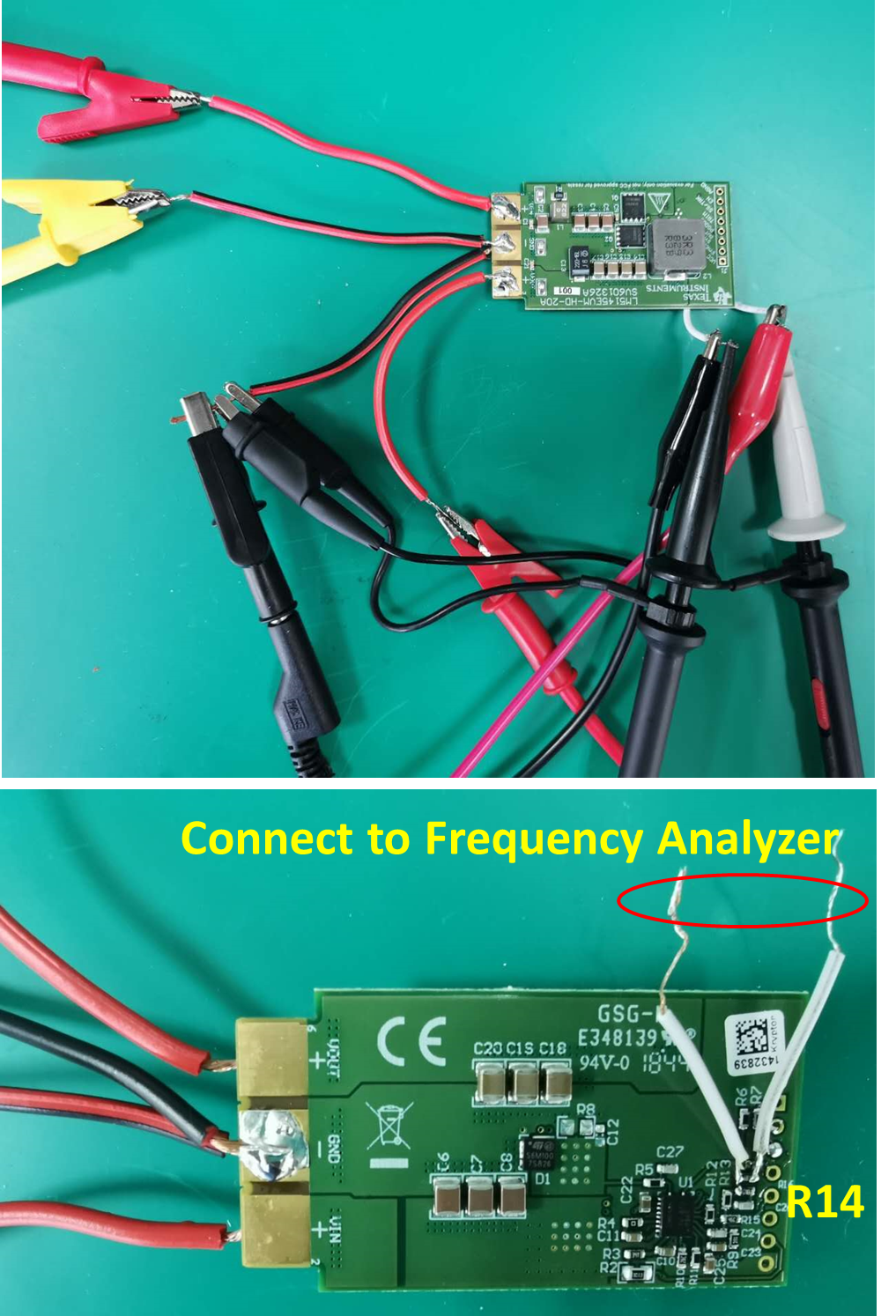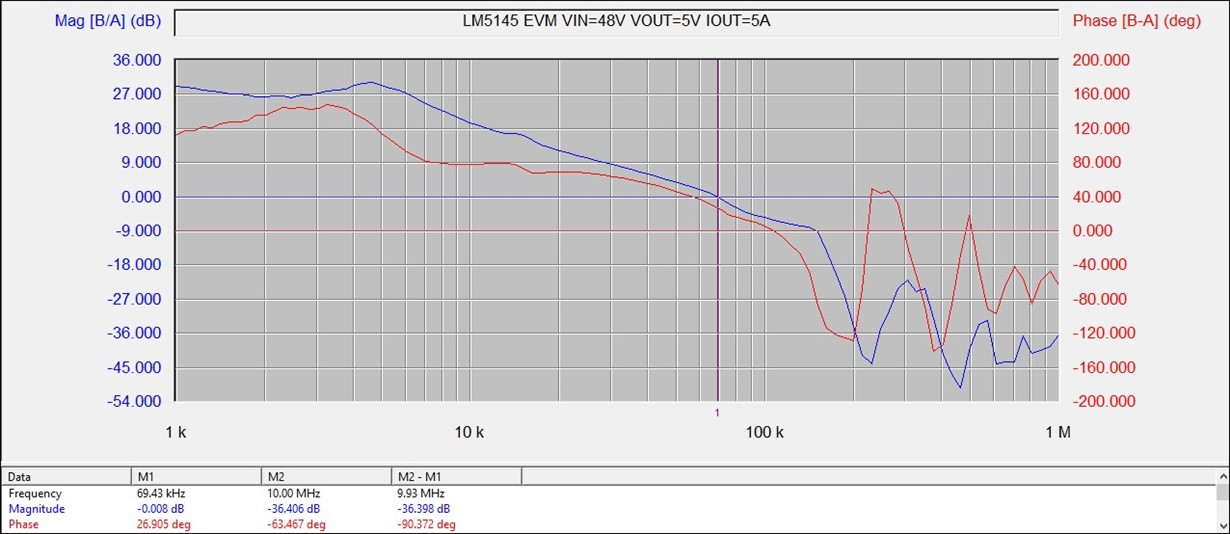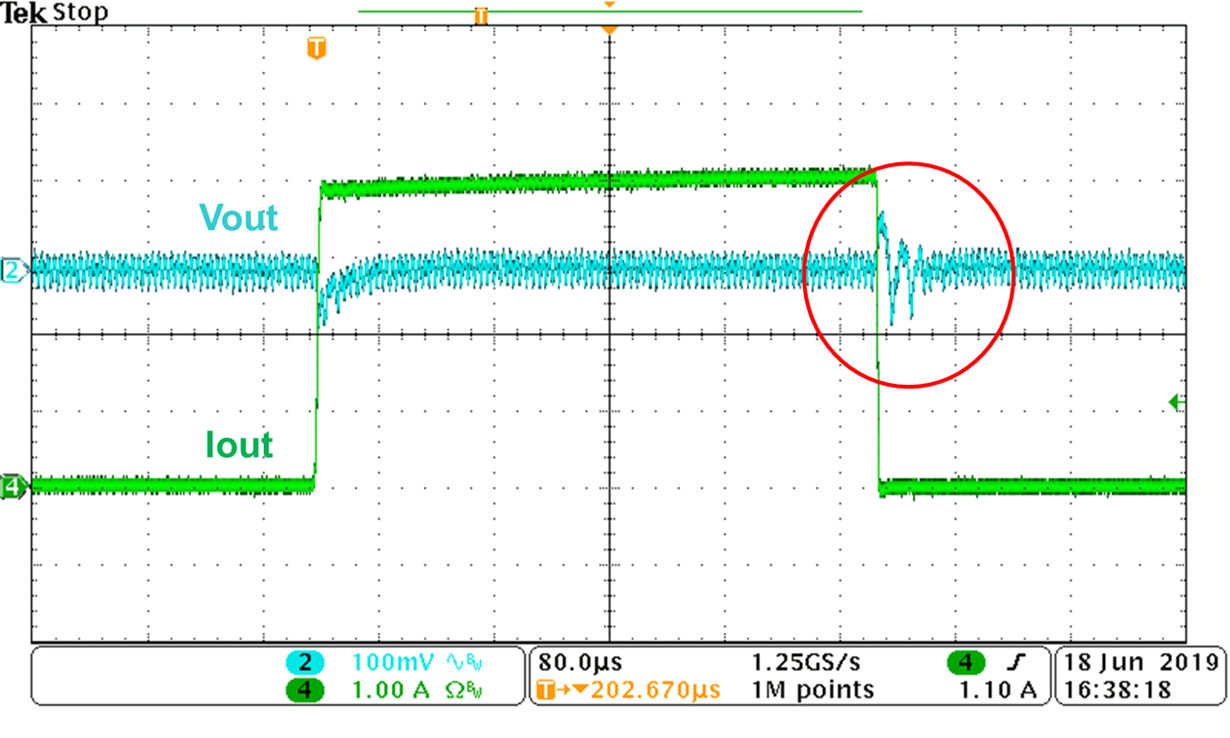Hi team,
I asked a question before in the below link:
https://e2e.ti.com/support/power-management/f/196/p/813926/3012298#3012298
I found the loop measurement results of the EVM is abnormal and different from calculation and simulation. Yesterday I measured three new EVMs again and all of them show the abnormal loop characteristics as I found in last question. I think the measurement method should be right, below picture is my test setup. Is there any possibilities that the components on the EVM are different from the BOM? Could you please help to measure the loop of the EVM to have a check? Sincerely thanks.
Best regards,
Arie





